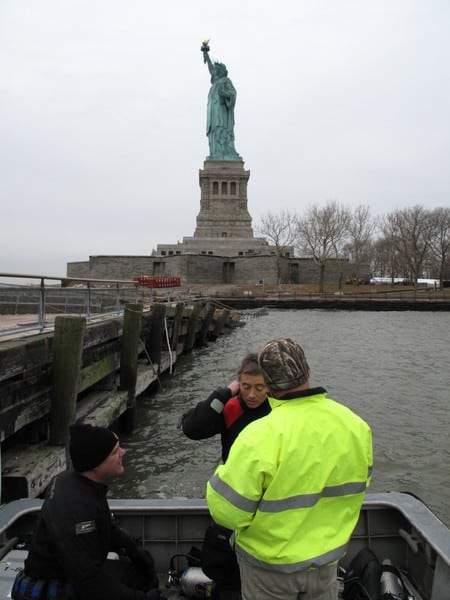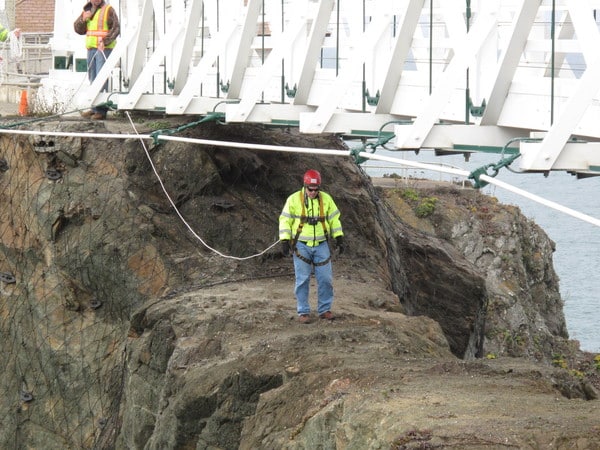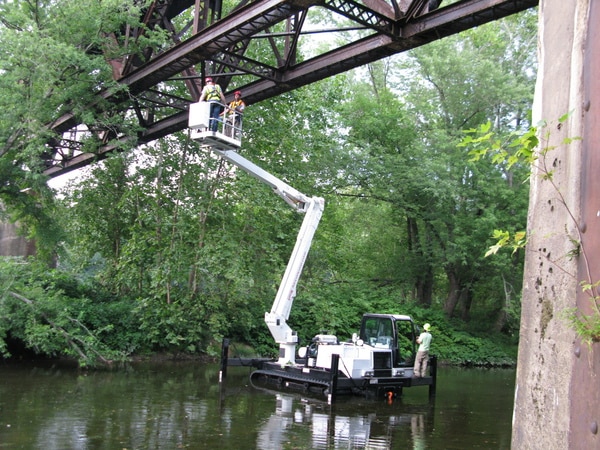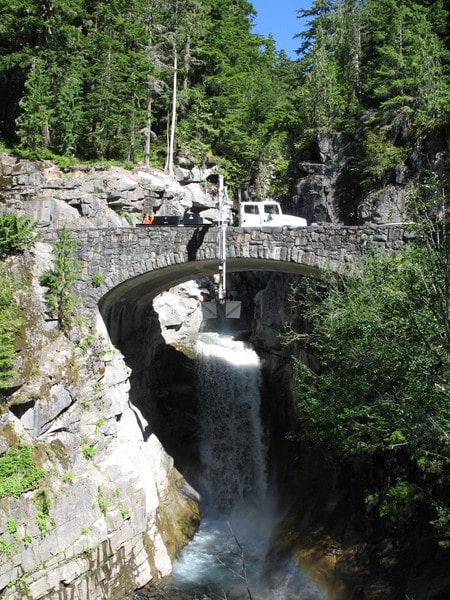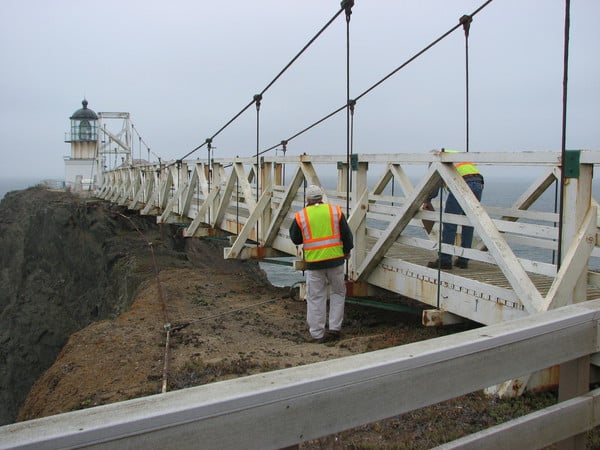FHWA Bridge Inspections
Since 2005 Volkert has been selected for three consecutive cycles, to provide National Bridge Inspection Standard (NBIS) and element-level inspections for structures owned by the National Park Service (NPS), United States Forest Service (USFS), United State Air Force (USAF), and other federal agencies for the Eastern Federal Lands Highway Division (EFLHD) of the Federal Highway Administration (FHWA) of the Federal Highway Administration (FHWA). These facilities include national parks, battlefields, monuments, historic sites, parkways, military bases, and other federal facilities.
For each task order, Volkert is responsible for providing routine, interim, or initial inspections of structures including culverts, tunnels, retaining walls, and bridges comprised of concrete, masonry, timber, and steel – including the fracture critical and fatigue prone details. These inspections require the use of specialized equipment such as snoopers, man-lifts, tracked man-lifts, underwater inspection equipment, and boats for access and safety. For projects requiring snoopers or man-lifts, traffic control/management is performed to keep traffic flowing freely during inspections. After field inspections are completed, Volkert compiles the data, prepares bridge inspection reports and provides recommendations for necessary repairs, rehabilitation, or future inspections required, then submits these reports using FHWA/EFLHD inspection software. Volkert has also been tasked with performing scour evaluations and load ratings.
Under these contracts, Volkert has performed over 4,300 bridge inspections in 45 states and Washington, DC, including the entire length of the Blue Ridge Parkway and Natchez Trace Parkway. Some of the notable structures inspected include: the Double Arch Bridge on Natchez Trace Parkway, Linn Cove Viaduct on the Blue Ridge Parkway, the Cumberland Gap Tunnel in Cumberland Gap National Historic Park, the Silver and Black Suspension Bridges in Grand Canyon National Park, and the Dry Tortugas National Park that is accessible only by boat or seaplane. Volkert also oversaw the analysis of the Roebling Suspension Bridge over the Delaware River which is the oldest wire suspension bridge open for use in the United States.
After Hurricane Sandy, Volkert performed topside and underwater inspections at several sites in the New York Metropolitan area. At the Statue of Liberty National Monument, Volkert provided in-depth topside and underwater inspections of the two docks, which service Liberty Island. The service dock was severely damaged during the storm, while the public dock had been damaged, but was open to essential ferry personnel to and from the Island. The findings from the inspections were used to develop preliminary repair/construction plans for both docks. In addition to the preliminary plans, Volkert provided detailed construction cost estimates and schedules. Following the work at Liberty Island, Volkert provided a detailed top side and underwater inspection of the Nichols Great Kills Marina in the Gateway National Recreation Area. In addition to the structural evaluation of the bulkhead and the remaining piles for the floating docks, Volkert worked with Dolan Research to complete a bathymetric survey of the area and to map submerged debris which included numerous vessels sunk during Hurricane Sandy.
As part of these contracts, Volkert has also performed multiple cycles of structural inspections on the 56 tunnels in the National Park System. Some of the more notable tunnels include the US Route 25E Tunnel (4600’) in Cumberland Gap National Historic Park, which is one of two tunnels in the United States that connects two states, the Wawona Mountain Tunnel (4237’) in Yosemite National Park, the five tunnel system at Lake Mead National Recreation Area, which were used to transport materials during the construction of the Hoover Dam, and three railroad tunnels beneath the Gateway Arch at the Jefferson National Expansion Memorial in St. Louis. In 2017, Volkert performed the initial element level inspections on all of the simple and complex vehicular tunnels owned and maintained by the NPS and developed the detailed tunnel inspection plans for these tunnels.
Along with vehicular structures, Volkert has also inspected 33 rail bridges at Cuyahoga National Park near Cleveland, Ohio which carry the Cuyahoga Valley Scenic Railroad through the park. Additional inspections included six rail structures at Lowell National Historic Park, the birthplace of the American industrial revolution, in Massachusetts which carry visitors in trolleys around the park.
Location
Nationwide
Client
Federal Highway Administration (FHWA)

